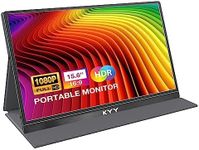Buying Guide for the Best Second Monitor
Choosing a second monitor can significantly enhance your productivity, gaming experience, or creative work. The right monitor can provide you with more screen real estate, better image quality, and a more comfortable viewing experience. To make an informed decision, it's important to understand the key specifications and how they align with your specific needs. Here are the main specs to consider when selecting a second monitor.Screen SizeScreen size refers to the diagonal measurement of the monitor's display area, usually in inches. This spec is important because it affects how much content you can see at once and how comfortable it is to view. Smaller screens (20-24 inches) are suitable for basic tasks and limited desk space. Medium screens (25-27 inches) offer a good balance for most users, providing ample space for multitasking without overwhelming your desk. Larger screens (28 inches and above) are ideal for gaming, design work, or if you need to view multiple windows simultaneously. Choose a size that fits your workspace and meets your viewing needs.
ResolutionResolution indicates the number of pixels on the screen, typically represented as width x height (e.g., 1920x1080). Higher resolution means more detail and sharper images. Common resolutions include Full HD (1920x1080), which is sufficient for general use and basic gaming. QHD (2560x1440) offers more detail and is great for multitasking and professional work. 4K (3840x2160) provides the highest detail and is ideal for video editing, graphic design, and high-end gaming. Choose a resolution that matches your primary use case and ensures text and images are clear and crisp.
Refresh RateRefresh rate is the number of times the monitor updates with new information per second, measured in Hertz (Hz). This spec is crucial for smooth motion in videos and games. Standard monitors have a refresh rate of 60Hz, which is adequate for everyday tasks and casual gaming. Higher refresh rates, such as 120Hz, 144Hz, or even 240Hz, are beneficial for competitive gaming and fast-paced action, providing smoother and more responsive visuals. Choose a refresh rate that aligns with your activities; higher rates are particularly important for gamers.
Panel TypePanel type affects the monitor's color accuracy, viewing angles, and response time. The main types are TN (Twisted Nematic), IPS (In-Plane Switching), and VA (Vertical Alignment). TN panels are affordable and have fast response times, making them suitable for gaming, but they have poorer color accuracy and viewing angles. IPS panels offer excellent color reproduction and wide viewing angles, ideal for creative work and general use. VA panels provide good contrast and color, with better viewing angles than TN but slower response times than IPS. Choose a panel type based on your priority: speed for gaming, color accuracy for creative work, or a balance for general use.
ConnectivityConnectivity refers to the types of ports available on the monitor, which determine how you can connect it to your computer and other devices. Common ports include HDMI, DisplayPort, USB-C, and VGA. HDMI and DisplayPort are widely used for high-definition video and audio. USB-C can transmit video, audio, and power, making it versatile for modern laptops. VGA is older and less common but still found on some devices. Ensure the monitor has the necessary ports to connect to your computer and any other peripherals you plan to use.
AdjustabilityAdjustability refers to the monitor's ability to tilt, swivel, pivot, and adjust in height. This spec is important for ergonomic comfort, allowing you to position the monitor at the optimal viewing angle to reduce strain on your neck and eyes. Basic monitors may only offer tilt adjustment, while more advanced models provide full adjustability. If you spend long hours in front of the screen, look for a monitor with good adjustability to ensure a comfortable and healthy setup.
Color AccuracyColor accuracy is the monitor's ability to display colors as they are intended to be seen. This is crucial for tasks that require precise color representation, such as photo editing, video production, and graphic design. Monitors with higher color accuracy often support wider color gamuts (e.g., sRGB, Adobe RGB) and may be factory-calibrated. If accurate color representation is important for your work, look for monitors with high color accuracy and consider those that come with calibration tools or are pre-calibrated.

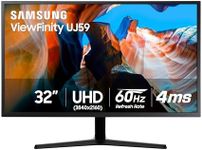

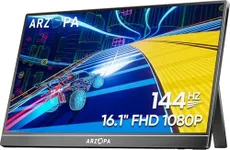
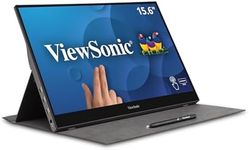


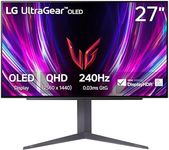
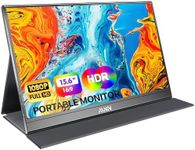





![KYY Portable Monitor 15.6'' 1080P FHD USB-C Portable Laptop Monitors w/Smart Cover & Dual Speaker, HDMI Computer Display IPS HDR External Gaming Monitor for PC Phone Mac Xbox PS4 Switch[Upgraded]](https://images-proxy.bestreviews.guide/Z3Py4aydNVRBPI1sova4UgLXcgM=/0x150/https://m.media-amazon.com/images/I/41CdBgZtF7L._AC_CX679_.jpg)
